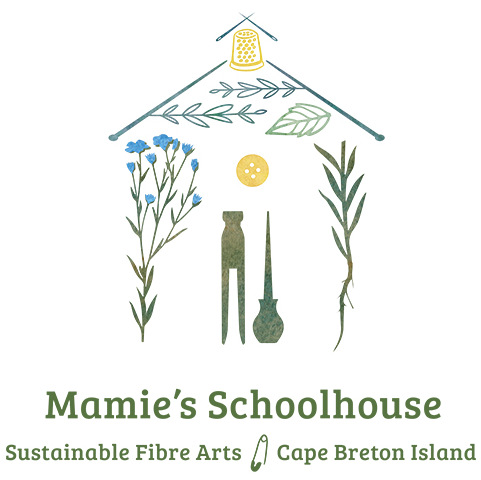From my Guilded, Module 2: Colour online course
Natural Dye Blues - Indigo/Woad Methods
I have compiled a list below of high quality references and instructions for a range of indigo pigment extraction and dyeing methods, including simple reduction vats, dried leaf vat, sig (fermented urine) vat, sukumo, and a whole host of other fascinating techniques. Dyeing with indigo/woad is generally more complex than working with other natural dyes - it takes effort to understand the reduction reaction and practice to develop skilled technique. You can also learn different vat methods, with lots of support from me, in my online course, Guilded, Module 2: Colour.
BASIC VAT METHOD
When I taught my friend how to dye with indigo and create shibori patterns
There are hundreds of different ways to prepare an indigo vat. This one is Michel Garcia’s 1:2:3 method as prepared by Jenny Dean. It is a great introduction for those new to indigo vat dyeing: https://www.jennydean.co.uk/1-2-3-indigo-fructoselime-vat/
SIG (FERMENTED URINE) VAT METHOD (IN ESTONIAN, WITH ENGLISH SUBTITLES)
DRIED LEAVES (INDIGOFERA TINCTORIA) VAT METHOD BY MICHEL GARCIA
INDIGO (ALL SPECIES)
One of the 1,700 year old methods I recreated as part of my Papyri Recreation Project
From my Natural Inks, Paints, and Stains online course
Growing Persicaria tinctoria (very detailed, ‘how-to’ guide from the Fibreshed organization): http://fibershed.org/wp-content/uploads/2018/01/indigo-planting-harvesting-nov2017.pdf
Document describing how to compost dried leaves of Persicaria tinctoria to make sukumo, and how to prepare a vat with it: (Buaisou Indigo Workshops: An exploration of Japanese methods of indigo farming, processing and dyeing): http://fibershed.org/.../buaisou-indigo-workshops-2018...
Indigo farming and processing in Oaxaca, Mexico: https://artsandculture.google.com/.../ygISoQrWn_YaLQ...
Purple from fresh leaf Persicaria tinctoria (aka Polygonum tinctorium): https://www.mukogawa-u.ac.jp/~ushida/e_purple.htm...
Research about an ancient indigo dyeing atelier in Pompeii. The article is in French and it describes a method to dye with dried leaves of Japanese indigo, using lime, henna leaves powder and dates: https://www.academia.edu/.../LE_BLEU_POMPEIEN_V_1_4_UN...
Research about the use of Indigofera tinctoria leaf powder as an additive to improve fermentation process in sukumo vats (Title: Indigofera Tinctoria Leaf Powder As A Promising Additive To Improve Indigo Fermentation Prepared With Sukumo (Composted Polygonum Tinctorium Leaves. Authors: Helena de Fátima Silva Lopes, Tu Zihao, Hisako Sumi and Isao Yumoto): https://www.researchgate.net/publication/351173229_Indigofera_Tinctoria_Leaf_Powder_As_A_Promising_Additive_To_Improve_Indigo_Fermentation_Prepared_With_Sukumo_Composted_Polygonum_Tinctorium_LeavesMicrobial communities associated with indigo vat fermentation: https://www.ncbi.nlm.nih.gov/pmc/articles/PMC6153312/...
WOAD (ISATIS SPECIES)
Also see the two separate documents in the group Files that begin: “Woad - Professor Hill’s Method For...”
Recreation of traditional methods of processing and dyeing with Woad and dye analyses (Searching for blue: Experiments with Woad fermentation vats and an explanation of the colours through dye analysis): https://www.sciencedirect.com/.../pii/S2352409X14000273
From garden to extracted pigment, a video tutorial of the entire process: https://www.youtube.com/embed/objcrgLQq60...
Article on Indigo precursors and changes with drying methods. Oberthür C, Graf H, Hamburger M. The content of indigo precursors in Isatis tinctoria leaves--a comparative study of selected accessions and post-harvest treatments. Phytochemistry. 2004;65(24):3261-3268. doi:10.1016/j.phytochem.2004.10.014 https://pubmed.ncbi.nlm.nih.gov/15561192/
Review (2020) about the phytochemistry and other aspects of Woad (Isatis tinctoria L.: A Review of Its Botany, Ethnobotanical Uses, Phytochemistry, Biological Activities, and Biotechnological Studies): https://www.mdpi.com/2223-7747/9/3/298/htm
Historical perspective on Woad growing in Europe and last agricultural production for dyemaking. http://www.southhollandlife.com/.../AOS-D-280-Woad-in-the...
Woad growing at scale and extraction methods to minimise indirubin formation and maximise indigo pigment. https://www.researchgate.net/.../222375052_An_Improved...
Woaded Blue: A Colorful Approach to the Dialectic between Written Historical Sources, Experimental Archaeology, Chromatographic Analyses, and Biochemical Research (article by Dominique Cardon, Zvi C. Koren and Hisako Sumi): https://www.mdpi.com/2571-9408/6/1/37
INDIGO FROM AROUND THE WORLD - YOUTUBE PLAYLIST







